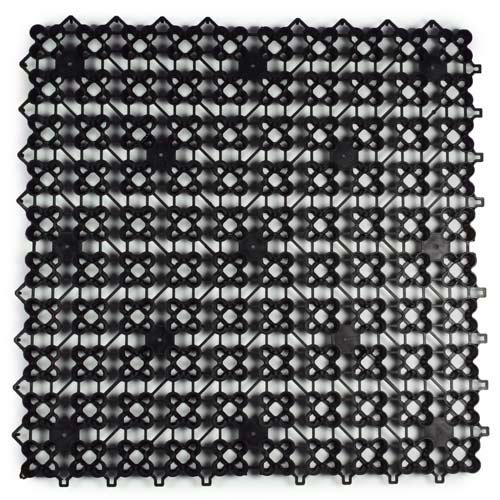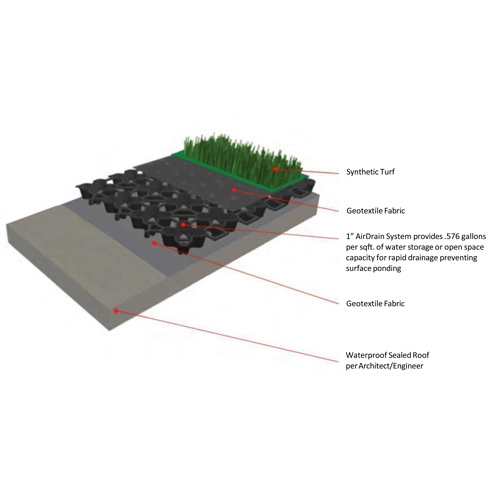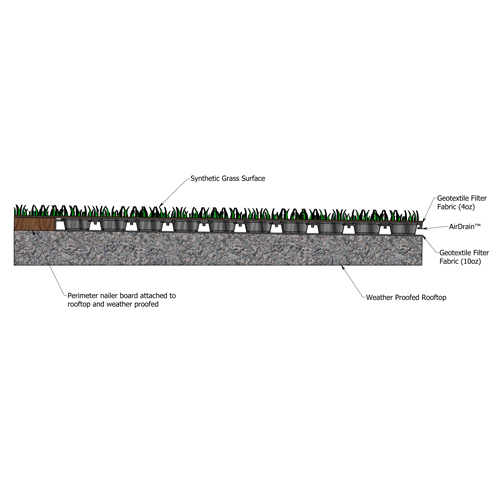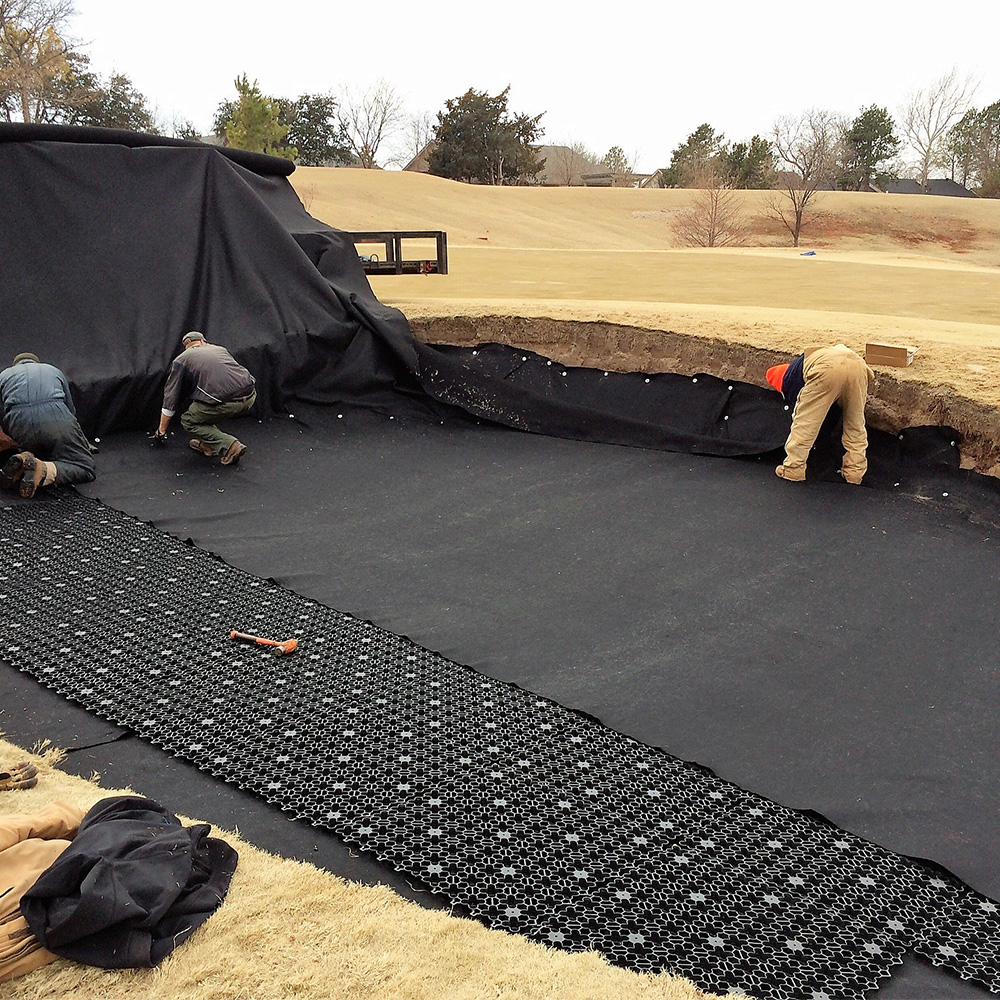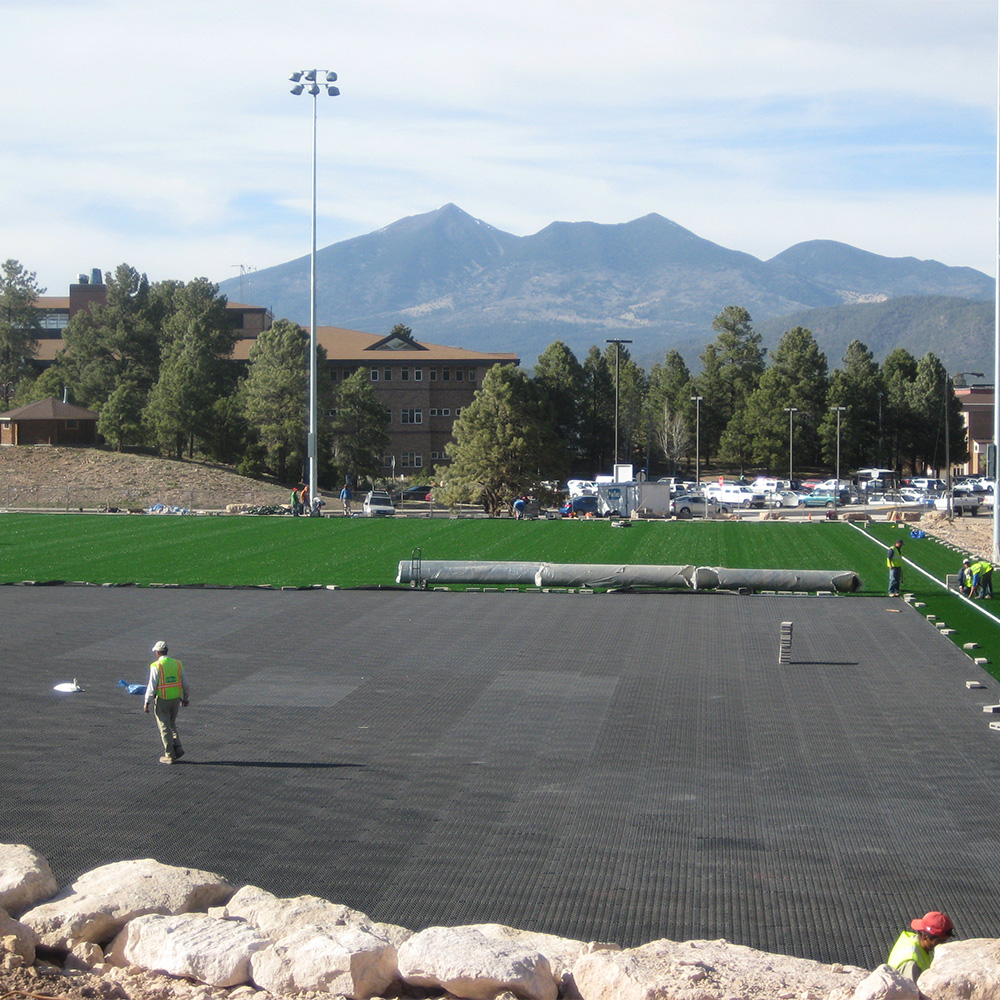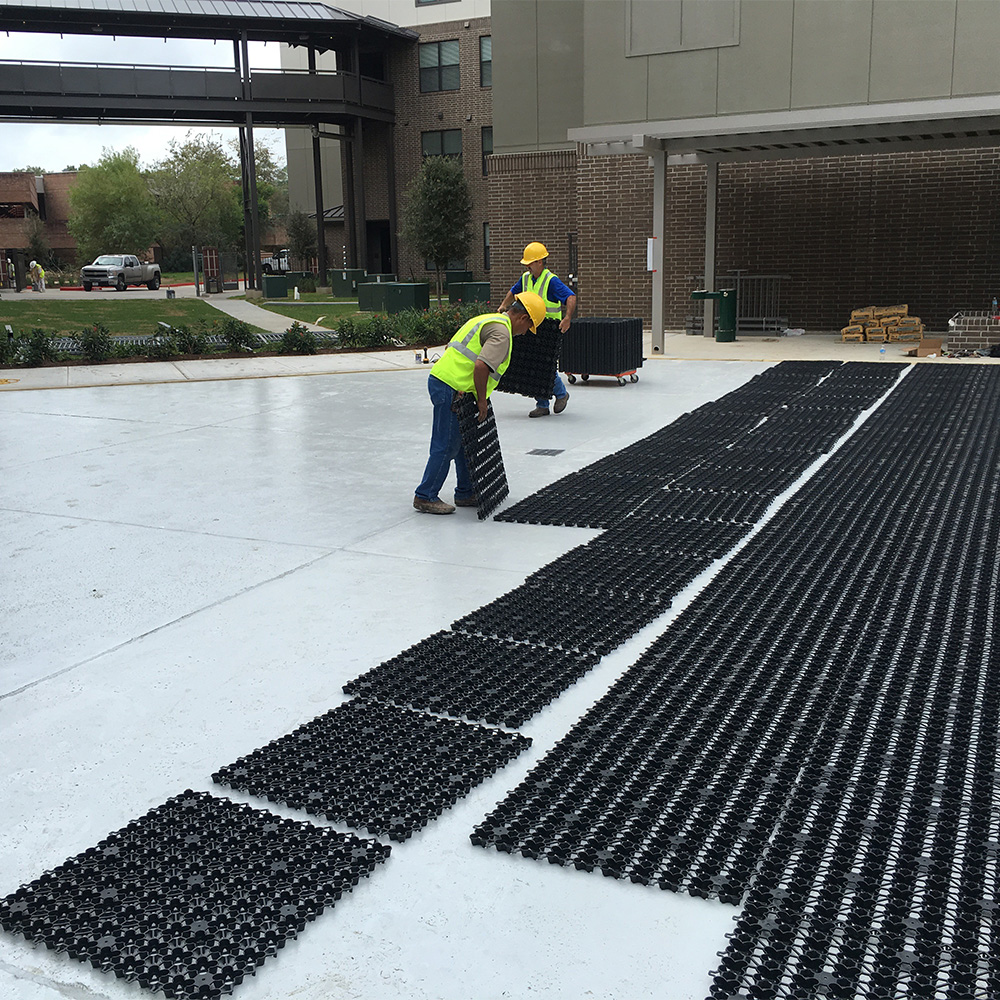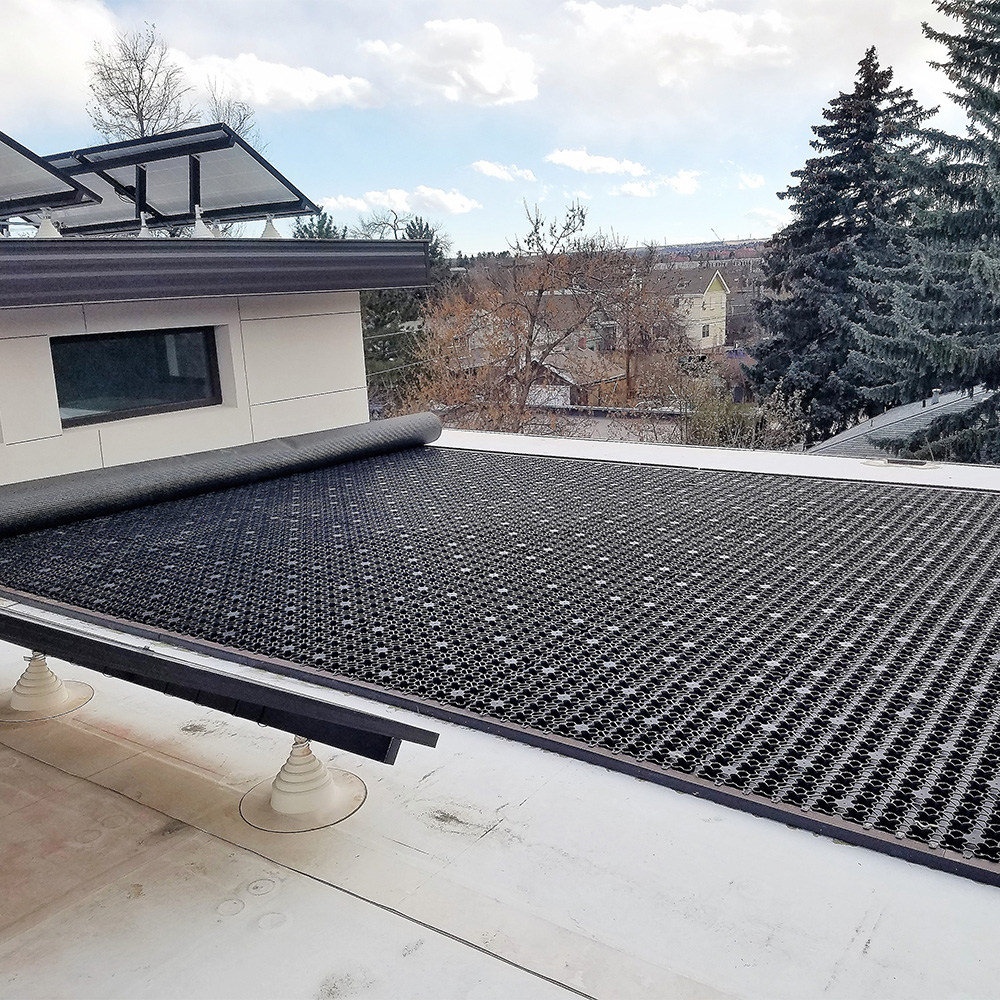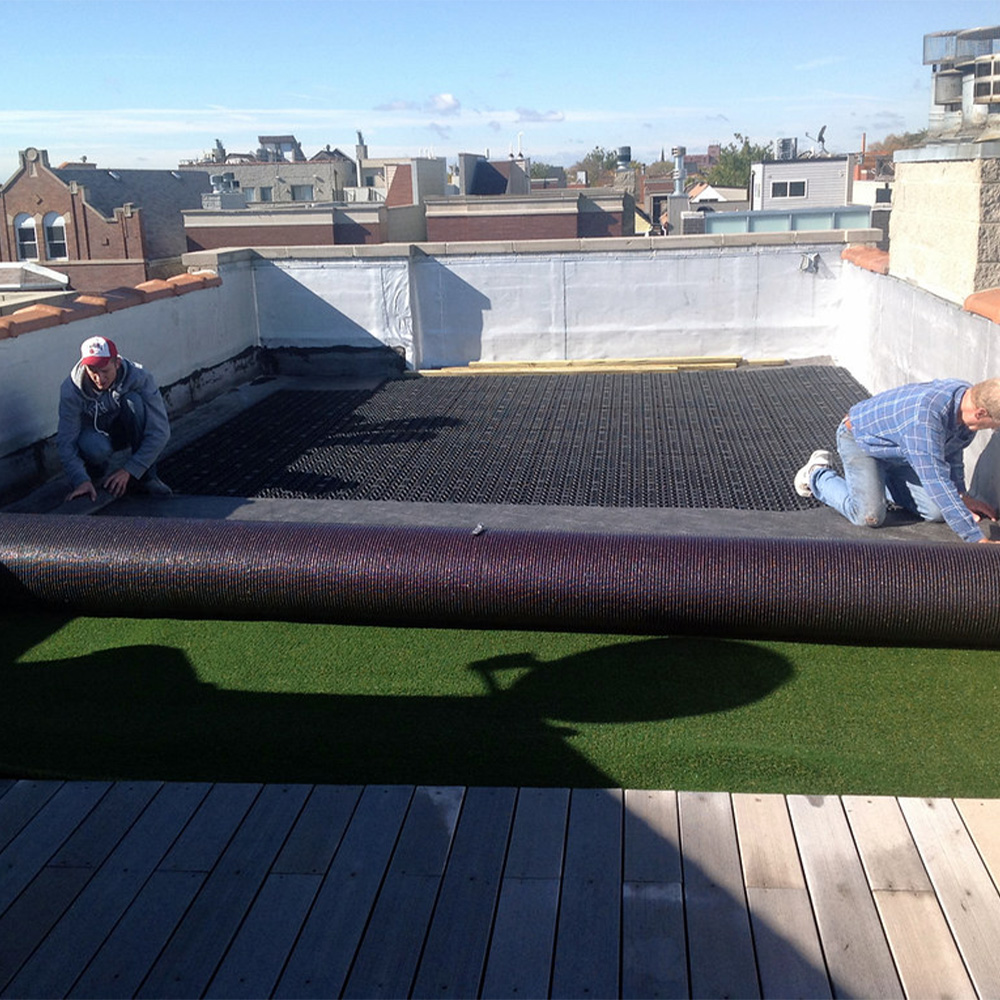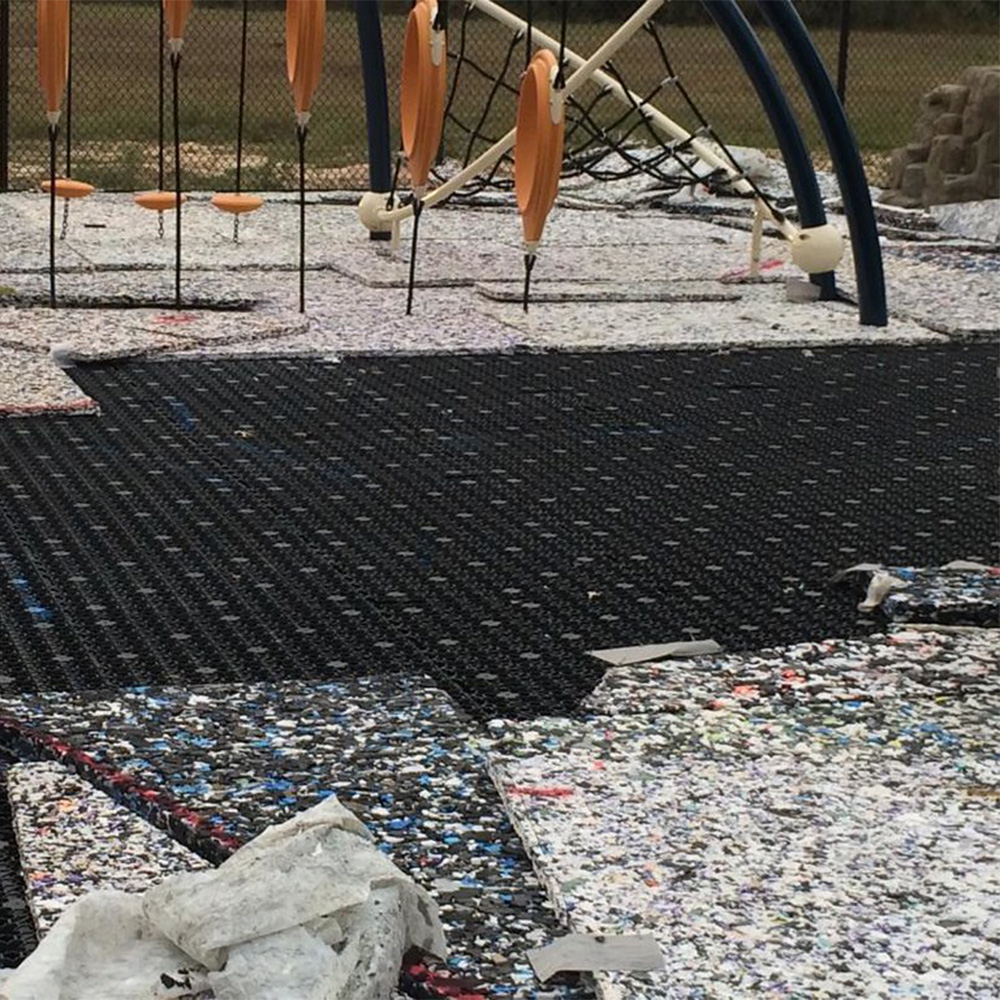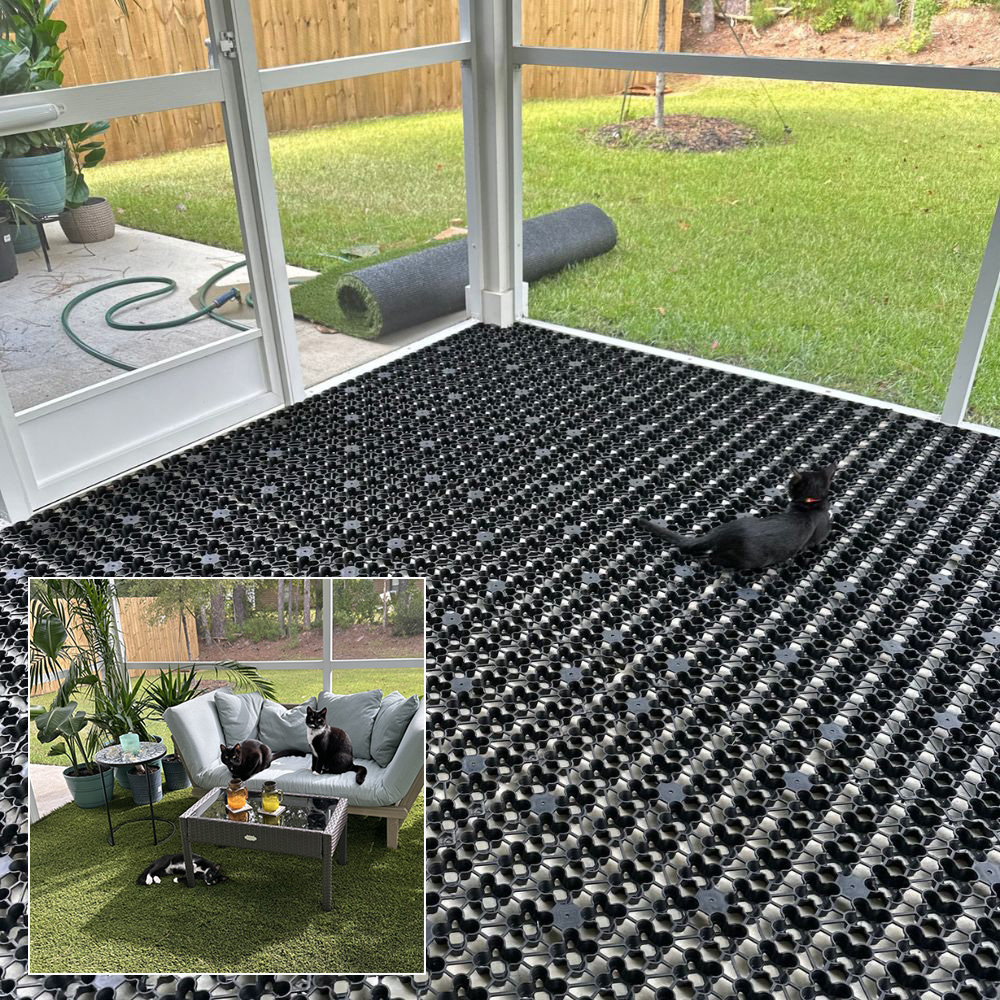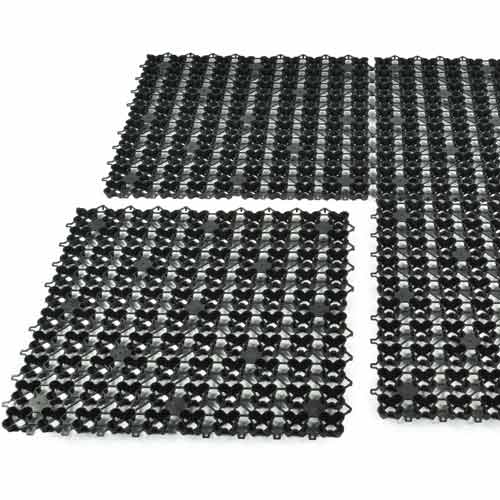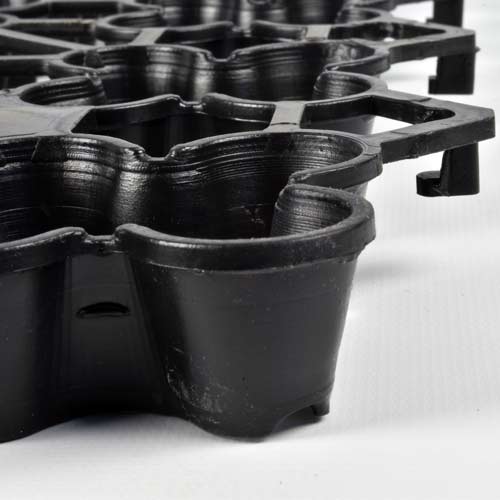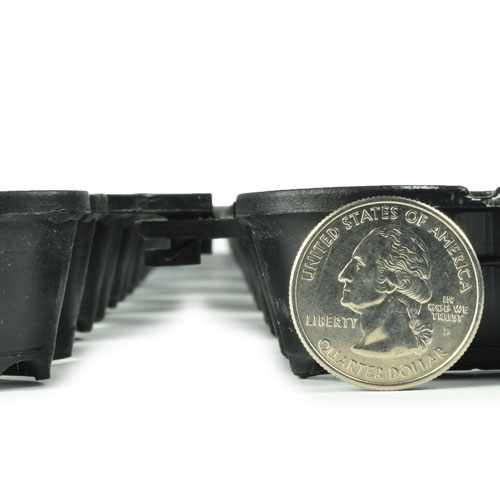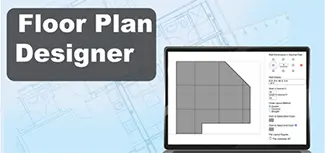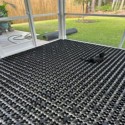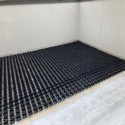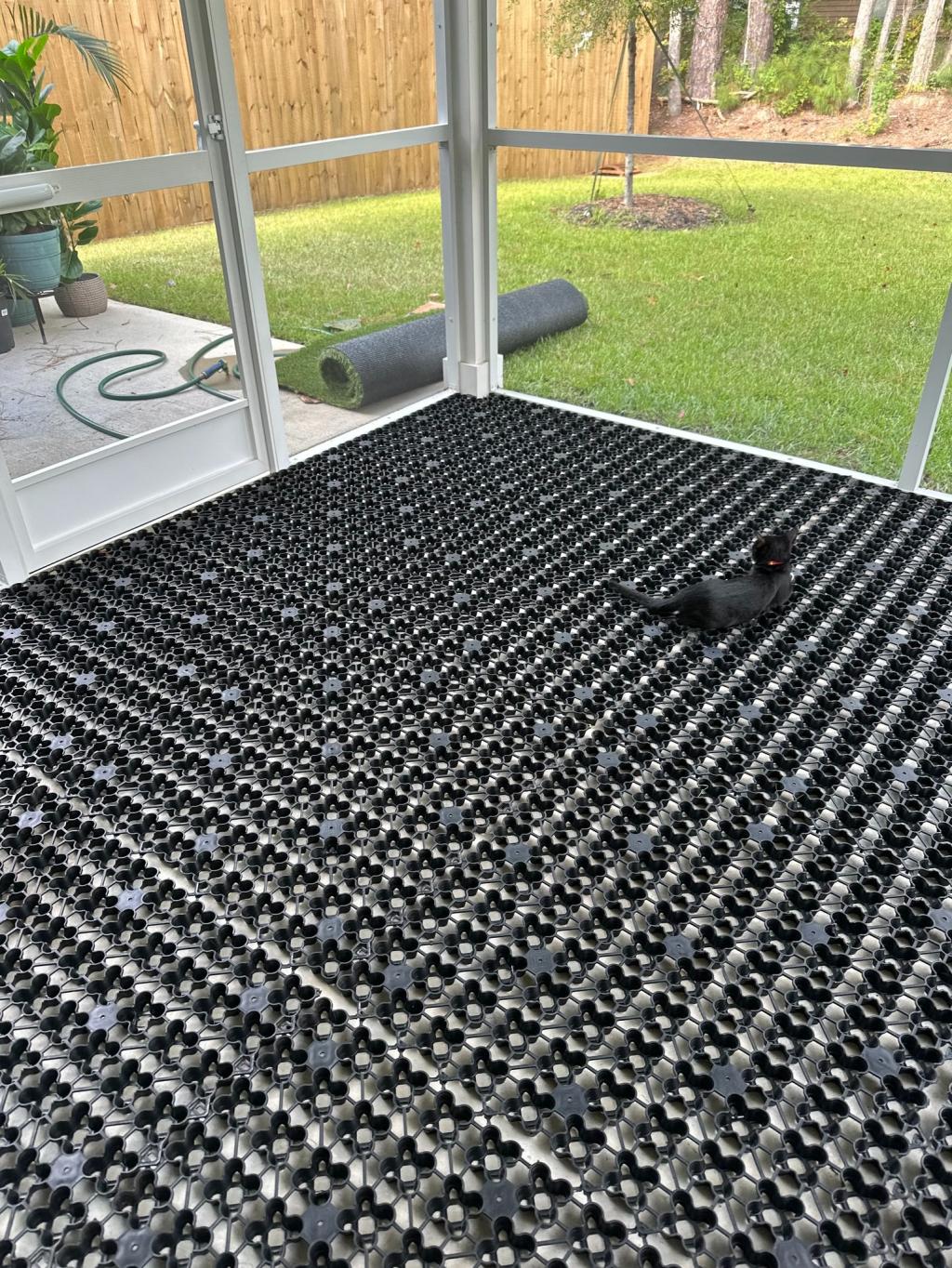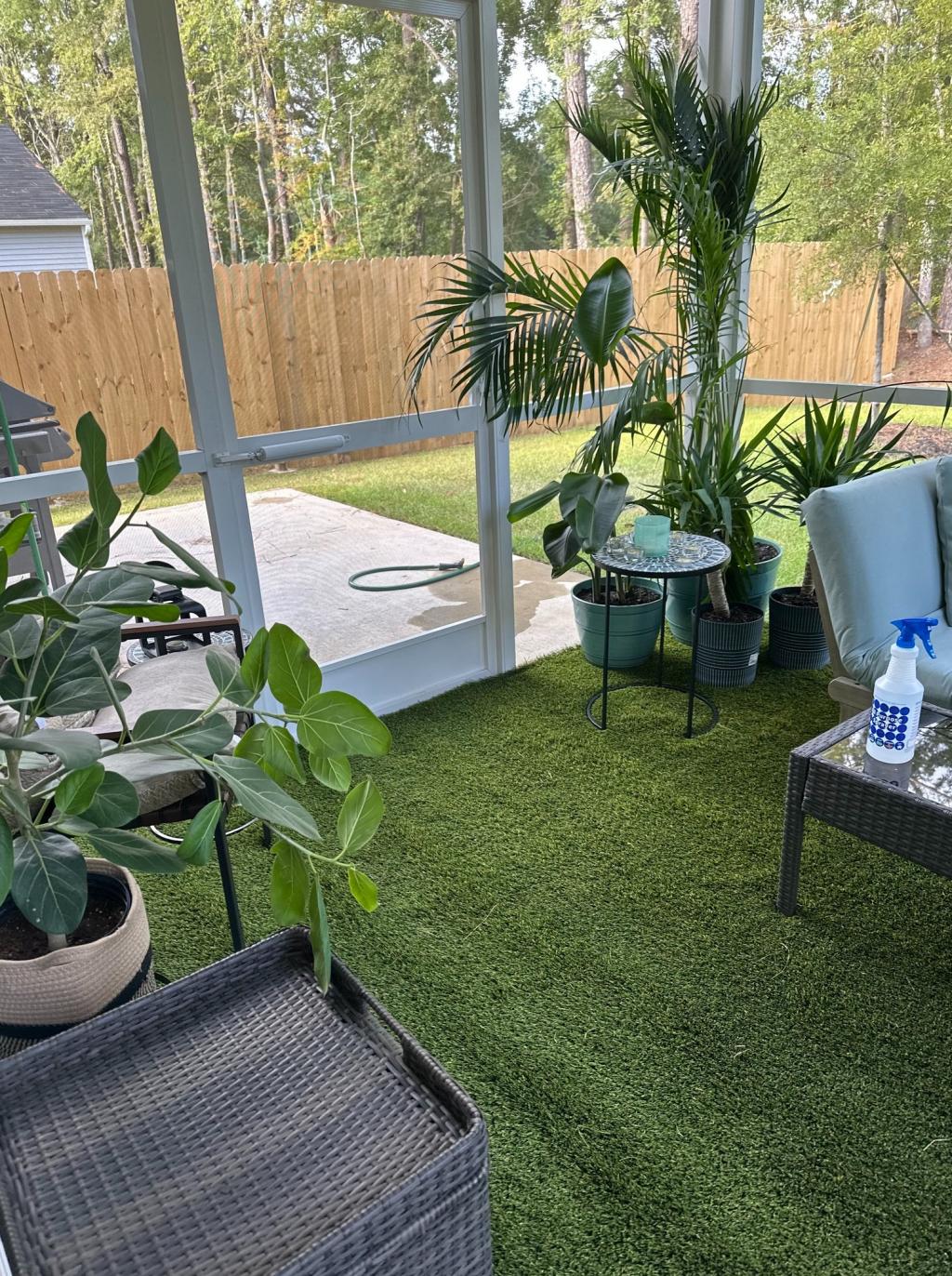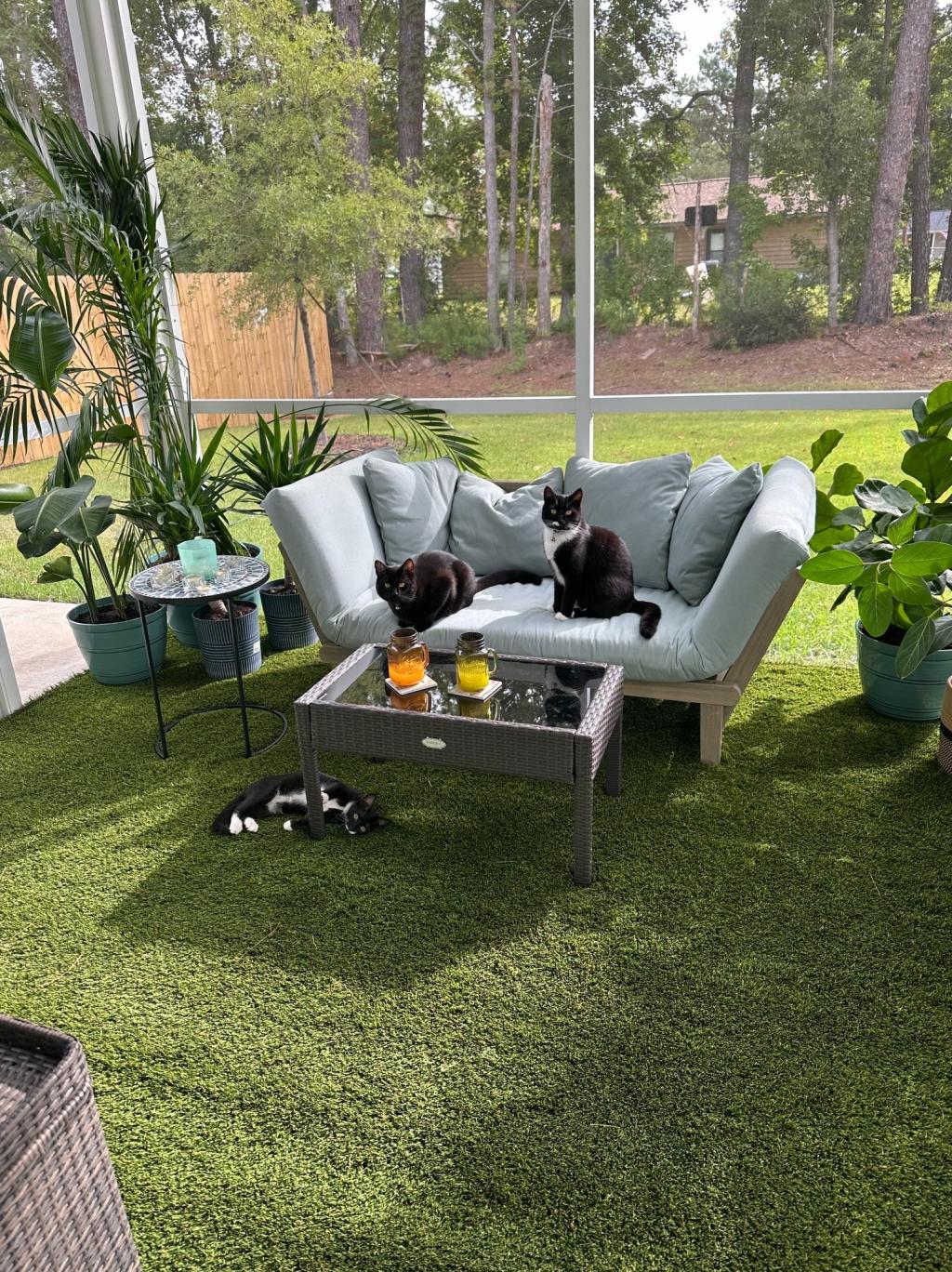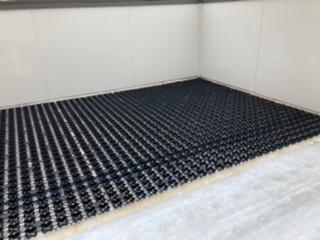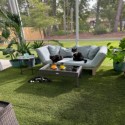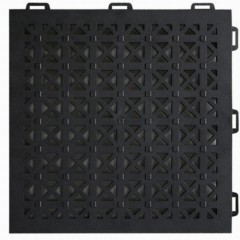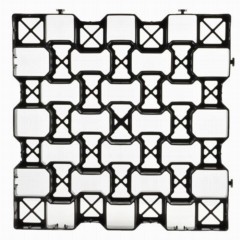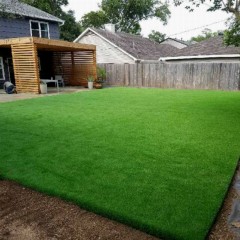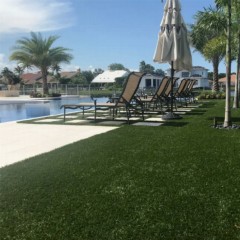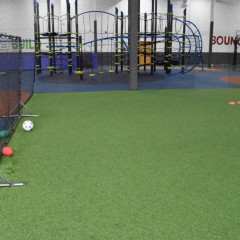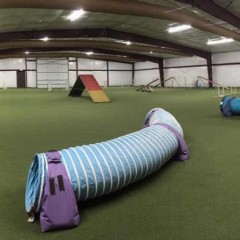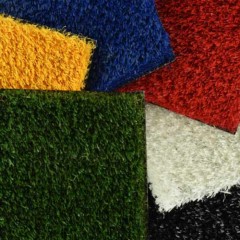Roof Open Drainage Tile
- Enjoy fast drainage with a 92% air void
- Establish effective drainage with just a 0.25% slope
- Hold up to 0.576 gallons of water per square foot
- See More Details
- Enjoy fast drainage with a 92% air void
- Establish effective drainage with just a 0.25% slope
- Hold up to 0.576 gallons of water per square foot
- Experience unmatched vertical and lateral drainage
- Easily install tiles with quick snap connectors
- Create and maintain constant shock attenuation
- Invest in tiles made from 100% recycled copolymer
- Choose tiles that help reduce shock attenuation
Rooftop Flooring, Artificial Grass Turf Underlayment, Dog Daycare Underlayment for Artificial Turf, Putting Green Drainage, Playground Drainage
Enjoy Fast Drainage with Drainage Tiles for Artificial Grass
The Roof Open Drainage Tile is designed to provide a fast drainage solution for versatile use. It’s made in the USA with high-quality 100% post-manufactured industrial content and is ideal for artificial turf areas for putting greens, sports fields, canine areas, playgrounds, and other areas.
These lightweight tiles weigh 3.1 pounds per 7 square feet with a 92% air void. They require just a 0.25% slope for effective drainage. On a nearly completely flat surface (1/2% of 1% slope), these tiles will drain 2.85 inches of rainfall in one minute. They are capable of draining away 171 inches of rain in a single hour and are only limited by the drainage capacities of the profile above and the exit drains below.
Maximize Drainage for Rooftops, Dog Runs, and More
When used under turf, these plastic tiles are ideal for use on rooftops. Their vertical and lateral drainage nearly eliminates standing water and moisture trapped on the roof, preventing infill migration.
They are also ideal for establishing drainage in outdoor dog runs and kennels. When turf is stretched over an aggregate or stone base, urine and water can’t drain as quickly. Installing these tiles above the base allows the urine to drain quickly, plus you can flush the system with water to clean it.
Maximize Artificial Turf Drainage
By raising artificial turf off of a subbase, these durable, interlocking drainage tiles create a one-inch air void, allowing the area to dry quickly. The tiles can be installed over compacted aggregate, concrete, asphalt, and flat roofs.
ASTM testing has proven that shock-absorbing properties reduce shock attenuation, and when used as an underlay, these tiles help maintain constant shock attenuation for synthetic turf.
Roof Open Drainage Tile Specs
- Strength: 233 PSI (unfilled), 6747 PSI (filled)
- Material: 100% Recycled copolymer with impact modified ‘no break’ polymer metallocene
- Size: 2.65x2.66 feet
- Square Foot Per Tile: 7.03
- Weight: 3.1 pounds
Shipping
Ships freight on pallets.
Please review our shipping disclaimer.
| SKU# | ADT-32x32x1 |
| In Stock | Yes |
| Product Type | Tile |
| Material Type | Polypropylene Plastic |
| Product Edging | Interlocking |
| Thickness | 1 inch |
| Width | 2.65 feet |
| Length | 2.66 feet |
| SF per Item | 7.03 |
| Weight | 3.10 lbs |
| Packaging | Shrink Wrapped on Pallets |
| Non Absorbent | Yes |
| Special Adhesives | No |
| Universal Interlock | No |
| Interlock Loss | 0.00 feet |
| Material Hardness | Shore A 90 |
| Interlocking Connections | Yes |
| Made In | USA |
| Surface Finish | Flat |
| Surface Design | Solid Color |
| Installation Method | Interlocking Dry Lay |
| UV Treated | No |
| Reversible | No |
| Border Strips Included | No |
| Manufacturer Warranty | 8 Year Limited |
Product Questions:
Q: I have a small rooftop area that I am trying to cover (12 x 60). I want to cover this with a small section of artificial turf and the rest in one of your other tiles. Do these drainage tiles connect to any of your other tiles?
Q: I have IPE wood deck tiles I would like to place on my deck. I need to get some clearance for drainage. Could I put my deck tiles on top of these? Are they flat, and would they puncture the TPO membrane?
Q: I have a 10x12 deck that I would like to cover with synthetic turf. Would a layer of these tiles between the deck and the turf help prevent water condensation under the turf? The deck is covered with a torch roll membrane. The company that installed it says it is walkable because it is double the thickness they use for roofing, but they say I should be careful with the furniture as it could puncture the membrane. Would these tiles puncture the membrane?
Q: Are the tiles 24''x24''? Can the tiles be cut to fit smaller/different dimensions than the tiles come in? If yes, what do you recommend using to cut the tiles? How does the turf ''attach'' to the tiles, or can it just lay on them? I am looking to buy tiles and then find a suitable turf to place on top that will look nice but not be super high/tall. I have decking that will sit next to the mat + turf combo.
Q: Does this work with all outdoor turfs? If not, which turf do you recommend for rooftops or balconies?
Q: Does this product have adjustable feet for leveling?
Q: Can these tiles endure the cold and freeze/thaw of a Wisconsin winter?
Customer Rating:
10/15/2024
It took me months of searching for drain core tiles and I was thrilled to find you!! The tiles arrived yesterday and I spent the day installing them. They were so easy to install and cut to size and now we have wall to wall turf on the screened in porch! Our kitties are in their paradise and we LOVE the space!! Thank you so much for the help with this project!!
Cynthia M.
SC
Customer Rating:
06/03/2022
Great service and knowledge to help me get the right product for my rooftop bar project
Ross
DALTON, GA
Customer Rating:
10/08/2020
When I first saw how small the packages were, I was a little worried. But then I saw how efficiently they stacked, and I was very impressed.
They are pretty sturdy, can actually bear weight which is what I cared about. The plastic used I wish was a bit thicker, but that would add to the overall cost. I love how they interlock with each other.
Gov
SAMMAMISH, WA
